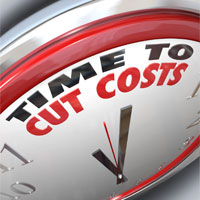
Finding the lowest cost Youngstown car insurance online can seem to be rather challenging for people who are new to online price comaprisons. With dozens of insurance companies available, how can consumers possibly compare every company to locate the best price?
It’s a great practice to price shop coverage on a regular basis because rates change frequently. Just because you found the best rates last year you will most likely find a better rate today. Forget all the misinformation about car insurance because we’re going to demonstrate the fastest way to find great coverage at a great price.
How much can you save with these seven discounts?
Auto insurance companies don’t always advertise every available discount in a way that’s easy to find, so we took the time to find both well-publicized and the harder-to-find ways to save on car insurance.
- New Car Discount – Insuring a new car can save up to 30% due to better safety requirements for new cars.
- Anti-theft System – Vehicles with anti-theft systems are stolen less frequently and earn discounts up to 10%.
- Accident Free – Good drivers with no accidents can earn big discounts when compared to drivers who are more careless.
- Payment Method – If paying your policy premium upfront instead of paying each month you may reduce your total bill.
- 55 and Retired – If you’re over the age of 55, you may qualify for a small decrease in premiums.
- Sign Early and Save – Some companies give discounts for buying a policy prior to your current policy expiration. It can save you around 10%.
- Good Students Pay Less – This discount can be rewarded with saving of up to 25%. The good student discount can last well after school through age 25.
Consumers should know that most of the big mark downs will not be given to your bottom line cost. Most cut the cost of specific coverages such as physical damage coverage or medical payments. Just because you may think you could get a free car insurance policy, you won’t be that lucky.
Don’t believe everything you hear
Car insurance companies such as Geico, State Farm and Progressive constantly bombard you with ads in print and on television. They all seem to make an identical promise that you’ll save big if you switch your policy. But how can every company make the same claim?
All the different companies can use profiling for the right customer that makes them money. An example of a driver they prefer might be profiled as between the ages of 40 and 55, a clean driving record, and drives newer vehicles. A driver who matches those parameters will get very good rates and is almost guaranteed to save when switching.
Consumers who don’t measure up to this ideal profile must pay more money and ends up with business not being written. Company advertisements say “drivers who switch” not “people who quote” save money. That is how companies can advertise the way they do. This illustrates why it is so important to compare as many rates as you can. Because you never know which company will provide you with the cheapest rates.
How much car insurance do I need?
When buying coverage for your vehicles, there really is not a single plan that fits everyone. Everyone’s needs are different.
These are some specific questions can help discover if you would benefit from an agent’s advice.
- I have good health insurance, so how much medical payments coverage do I need?
- How much underlying liability do I need for an umbrella policy?
- Is my nanny covered when driving my vehicle?
- Exactly who is provided coverage by my policy?
- Does liability extend to a camper or trailer?
- Am I covered when using my vehicle for business?
- Does my vehicle need full coverage?
- Should I buy additional glass protection?
- Can I drive in Mexico and have coverage?
- Can I pay claims out-of-pocket if I buy high deductibles?
If it’s difficult to answer those questions but a few of them apply, you may need to chat with an insurance agent. If you don’t have a local agent, fill out this quick form.
Specific coverages
Having a good grasp of a car insurance policy can be of help when determining appropriate coverage at the best deductibles and correct limits. The terms used in a policy can be ambiguous and coverage can change by endorsement.
Collision protection
Collision coverage covers damage to your vehicle resulting from colliding with an object or car. You first must pay a deductible and the rest of the damage will be paid by collision coverage.
Collision coverage protects against claims such as crashing into a ditch, hitting a parking meter, backing into a parked car and driving through your garage door. Collision coverage makes up a good portion of your premium, so you might think about dropping it from lower value vehicles. Drivers also have the option to choose a higher deductible to get cheaper collision coverage.
Comprehensive coverage (or Other than Collision)
Comprehensive insurance coverage will pay to fix damage from a wide range of events other than collision. You first have to pay a deductible and then insurance will cover the rest of the damage.
Comprehensive coverage protects against things such as damage from flooding, hitting a bird, vandalism, a broken windshield and falling objects. The maximum payout a car insurance company will pay at claim time is the market value of your vehicle, so if your deductible is as high as the vehicle’s value consider dropping full coverage.
Auto liability
Liability insurance can cover damage that occurs to a person or their property by causing an accident. Split limit liability has three limits of coverage: bodily injury per person, bodily injury per accident and property damage. As an example, you may have limits of 25/50/25 which means $25,000 bodily injury coverage, a per accident bodily injury limit of $50,000, and property damage coverage for $25,000.
Liability insurance covers things like loss of income, medical services, legal defense fees and repair costs for stationary objects. How much coverage you buy is a decision to put some thought into, but it’s cheap coverage so purchase as much as you can afford. Ohio requires drivers to carry at least 12,500/25,000/7,500 but you should think about purchasing more liability than the minimum.
Insurance for medical payments
Medical payments and Personal Injury Protection insurance provide coverage for bills like surgery, EMT expenses and doctor visits. They can be used to fill the gap from your health insurance plan or if you are not covered by health insurance. They cover not only the driver but also the vehicle occupants and also covers any family member struck as a pedestrian. PIP is only offered in select states and may carry a deductible
Uninsured Motorist or Underinsured Motorist insurance
This coverage gives you protection when the “other guys” either have no liability insurance or not enough. It can pay for medical payments for you and your occupants and also any damage incurred to your vehicle.
Since a lot of drivers only purchase the least amount of liability that is required (Ohio limits are 12,500/25/7,500), it doesn’t take a major accident to exceed their coverage limits. So UM/UIM coverage is very important.
Additional detailed information can be found at the Ohio Department of Insurance website. Ohio drivers can read consumer alerts, read state legal mandates and laws, find a variety of consumer forms, and view agent and company licensing information.
Other useful links include this site for car insurance information in Ohio and this page where you can research Youngstown insurance agents.
Best coverage at the best price
When trying to cut insurance costs, it’s a bad idea to buy lower coverage limits just to save a few bucks. There have been many cases where drivers have reduced physical damage coverage and learned later that it was a big error on their part. Your aim should be to purchase a proper amount of coverage for the lowest price while still protecting your assets.
In this article, we presented a lot of techniques to get a better price on car insurance. The key concept to understand is the more companies you get rates for, the better chance you’ll have of finding lower rates. Consumers may even find the lowest priced car insurance comes from a small mutual company.
Drivers who switch companies do it for any number of reasons including unfair underwriting practices, delays in responding to claim requests, questionable increases in premium and policy cancellation. Regardless of your reason for switching companies, finding the right car insurance provider is pretty easy and you might even save some money in the process.

